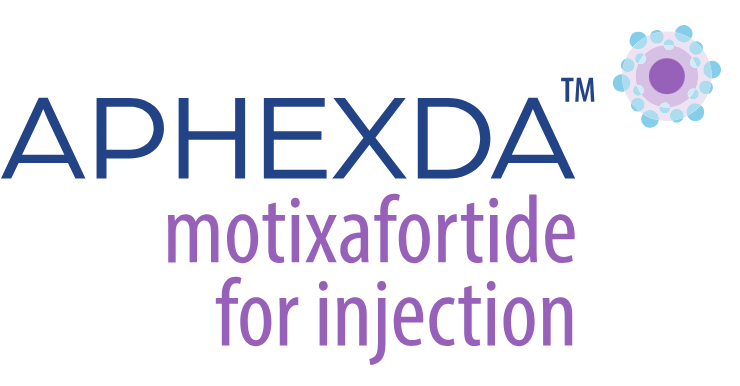Talvey (talquetamab-tgvs) vs Aphexda (motixafortide)
Talvey (talquetamab-tgvs) vs Aphexda (motixafortide)
Talquetamab-tgvs (Talzenna) is a monoclonal antibody therapy targeting GPRC5D, a novel target for multiple myeloma, and is currently being investigated for its efficacy in treating this type of cancer. Motixafortide (BL-8040), on the other hand, is a CXCR4 antagonist designed to mobilize cancer cells from the bone marrow and sensitize them to chemotherapy and immunotherapy; it is being studied for use in multiple hematological malignancies, as well as solid tumors. When deciding between these two treatments, it is critical for a patient to consult with their healthcare provider to consider the specific type of cancer they have, the stage of their disease, their overall health, and the mechanism of action and clinical trial evidence supporting each medication.
Difference between Talvey and Aphexda
| Metric | Talvey (talquetamab-tgvs) | Aphexda (motixafortide) |
|---|---|---|
| Generic name | talquetamab-tgvs | motixafortide |
| Indications | Currently being investigated for the treatment of multiple myeloma | Investigated for stem cell mobilization, solid tumors, and hematological malignancies |
| Mechanism of action | Bispecific antibody targeting GPRC5D on multiple myeloma cells and CD3 on T cells | CXCR4 antagonist that inhibits the CXCR4/SDF-1 chemokine pathway |
| Brand names | Talvey | Aphexda |
| Administrative route | Subcutaneous injection | Subcutaneous injection |
| Side effects | Cytokine release syndrome, infusion-related reactions, skin reactions | Bone pain, diarrhea, nausea, headache, fatigue |
| Contraindications | None yet officially established as it is still under investigation | Should not be used in patients with severe cardiac disease or in combination with granulocyte colony-stimulating factors (G-CSF) within 24 hours |
| Drug class | Bispecific antibody | CXCR4 antagonist |
| Manufacturer | Janssen Biotech, Inc. | BioLineRx Ltd. |
Efficacy
Talvey (talquetamab-tgvs) for Multiple Myeloma
Talvey, also known by its generic name talquetamab-tgvs, is an investigational therapy being studied for the treatment of multiple myeloma, a type of blood cancer that affects plasma cells. As an experimental drug, Talvey is designed to target and bind to both G protein-coupled receptor family C group 5 member D (GPRC5D) on the surface of multiple myeloma cells and CD3 on the surface of T-cells. This dual targeting mechanism is intended to redirect T-cells to kill the myeloma cells. Early clinical trials have shown promise in patients with relapsed or refractory multiple myeloma, indicating that Talvey may offer a novel therapeutic approach for individuals who have exhausted other treatment options.
In clinical studies, Talvey has demonstrated efficacy in reducing tumor burden in patients with multiple myeloma. The response rates observed in early-phase trials suggest that it can induce partial or complete responses in a significant proportion of patients. However, as an investigational drug, Talvey is still undergoing clinical trials to further evaluate its safety and efficacy profile. The results of these trials will be crucial in determining whether Talvey will become a standard treatment option for multiple myeloma.
Aphexda (motixafortide) for Multiple Myeloma
Aphexda, with the generic name motixafortide, is another investigational drug being evaluated for the treatment of multiple myeloma. Motixafortide is a CXCR4 antagonist that is designed to disrupt the interaction between multiple myeloma cells and the bone marrow microenvironment. By blocking the CXCR4 receptor, Aphexda aims to sensitize the myeloma cells to chemotherapy and immunotherapy by mobilizing them out of the protective bone marrow niche and into the bloodstream, where they are more vulnerable to treatment.
The efficacy of Aphexda in the treatment of multiple myeloma is being assessed in combination with other therapies. Preliminary data from clinical trials have shown that when used in conjunction with standard treatments, Aphexda can enhance the mobilization of hematopoietic stem cells and may improve treatment outcomes. The combination of Aphexda with other anti-myeloma drugs is a subject of ongoing research, and further studies are required to confirm its potential benefits and to establish its role in the treatment paradigm for multiple myeloma.
Regulatory Agency Approvals
Talvey
-
European Medical Agency (EMA), European Union

-
Food and Drug Administration (FDA), USA

Aphexda
-
Food and Drug Administration (FDA), USA

Access Talvey or Aphexda today
If Talvey or Aphexda are not approved or available in your country (e.g. due to supply issues), you can access them via Everyone.org.
How it works

Make an enquiry
Choose the medicine you want to buy, answer a couple of questions, and upload your prescription to speed things up. We’ll get back to you within 24 hours.


Make an enquiry
Choose the medicine you want to buy, answer a couple of questions, and upload your prescription to speed things up. We’ll get back to you within 24 hours.


Breeze through the paperwork
We'll guide you through the required documents for importing unapproved medicine, ensuring you have all the necessary information.


Get a personalized quote
We’ll prepare a quote for you, including medicine costs and any shipping, administrative, or import fees that may apply.


Receive your medicine
Accept the quote and we’ll handle the rest - sourcing and safely delivering your medicine.

Some text on this page has been automatically generated. Speak to your physician before you start a new treatment or medication.
Let's talk
If you have any questions, call us or send us a message through WhatsApp or email:
Contact us




